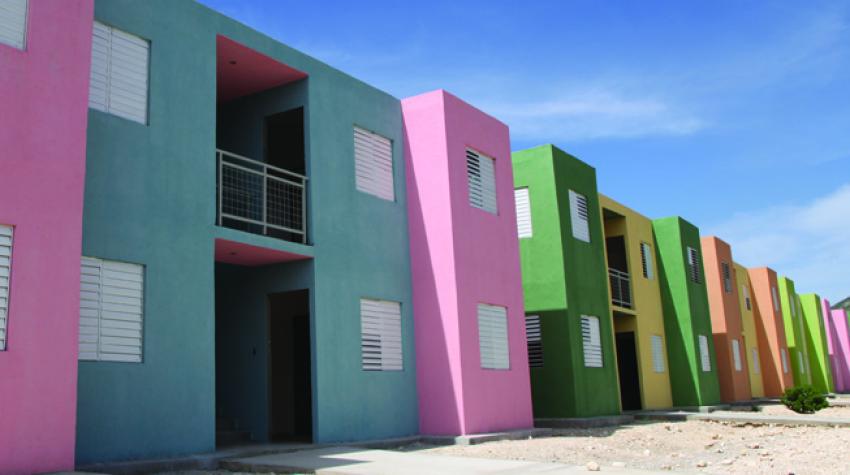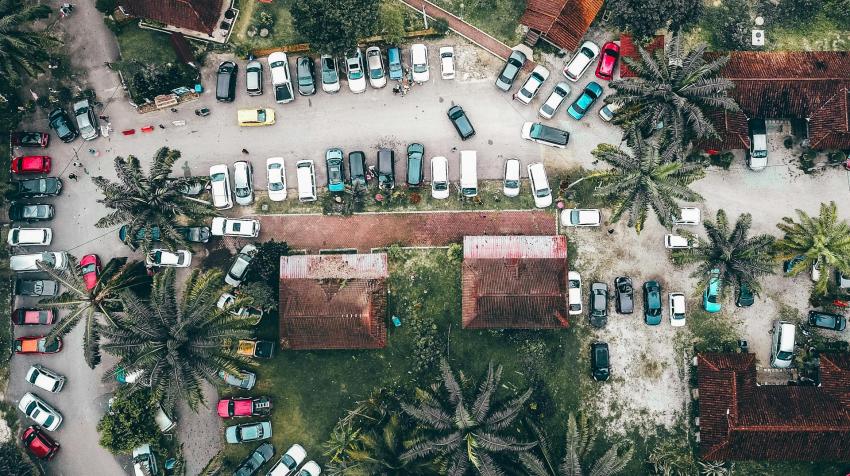October 2016, No. 3 Vol. LIII, Human Habits, Human Habitats
The history of construction shows that builders have always been creative in adapting and upgrading housing structures by making the best use of locally available resources to meet their needs, while taking into account local economic, social and climatic constraints. Societies worldwide have developed building cultures that result in ‘contextual’ architecture, corresponding to unique construction methods and specific ways of life. Local building cultures, however, are not static. They evolve as societies do, particularly when exchanges with other countries and cultures take place, introducing new knowledge, building materials and techniques.
Local building cultures have often been linked to a need recognized and valued in traditional societies: the balance between man and nature. This ancient quest corresponds to what is described today as sustainable development. So many good examples of this concept are already present throughout the world. Unfortunately, due to globalization, this local knowledge has been increasingly discredited and, like a great number of animal and plant species, is becoming endangered. This does not just represent a loss of cultural diversity and of pertinent, scientific knowledge that is useful to humanity as a foundation for global reflection, but even more so as a basis for local action.
This knowledge is present in various spheres: decision-making on settlement locations, activities planning, management of land and urban areas, architectural composition, and construction materials and organization. It also includes interesting approaches to risk prevention and preparedness, as well as to post-disaster reconstruction. In fragile or high-risk areas, traditional technical solutions and associated skills are often particularly astute and specific, making them easier to identify.
With globalization, entire fields of knowledge related to building and construction are lost, in the same manner and at the same pace as the loss of our planet’s forests. Although the loss of knowledge is happening more quietly, the effects are equally devastating. These changes began in the first half of the twentieth century with the industrialization of construction methods (mainly involving the use of concrete) and with the standardization of education dedicated exclusively to the implementation of those methods through the establishment of technical and vocational institutions and engineering schools.
Today, two worlds exist side-by-side: that of the ‘rich’, who are capable of adopting modernity, and that of the ‘poor’, who are maintaining their traditional ways of living but who are pressured by society and the media into building bad copies of modern buildings or utilizing inadequate and even dangerous technological blends. A terrible example of this problem was seen in Haiti after the earthquake of January 2010. While small, traditional houses withstood the disaster, poorly constructed ‘modern’ structures, which the vast majority of Haitians struggled to afford, proved to be deadly.
Still, international building standards prevail, bringing about similar results everywhere. Every disaster tends to remind us of this fact. In a majority of cases, close observation reveals that traditional buildings are more resistant, or at least cause fewer casualties. Furthermore, the rehabilitation of traditional buildings is feasible, simple and less costly. These models should, therefore, inspire professionals involved in reconstruction programmes.
In the 1970s, a new awareness, strongly inspired by the work of the Egyptian architect Hassan Fathy, started to develop. Alternatives were sought to modern habitat models that were well regarded but overly expensive, as well as to traditional models that were wrongly considered obsolete and irrelevant. The approach will remain mainly technical for a long time. This is the era of ‘appropriate technologies’, which have produced a number of good results, but are lacking in terms of cost-efficiency, reproducibility, and as a response to real needs.
Despite this realization, the increasing number of disasters, as well as pressure from the media, allows support to grow for housing programmes that favour quantity over quality. This is especially true at times when choices must be made quickly, which tends to lead to so-called ‘universal’, ‘ready-to-use’ solutions. While such solutions can respond to needs in the short term, they often prove less effective or even counterproductive in the medium and long term, as they generate inadequate standards and expectations that are impossible to fulfil on a larger scale.
For the past 30 years , CRAterre-ENSAG, in collaboration with many partners, has conducted research related to actual programmes in the field, aiming to take better account of the remarkable potential of local building cultures. It has been working to better define concepts, find opportunities to implement solutions on the ground and then develop appropriate methods and strategies. The idea is to identify local building systems as well as building-related knowledge, know-how and organization methods with proven effectiveness, and then integrate them into new programmes and projects. Without ruling out the possible contributions of industrial production, the goal is to meet the needs and expectations of local populations, but also to provide solutions that are socially and culturally acceptable, as well as economically accessible.
Some of the programmes implemented clearly highlight the relevance of such choices. In the early 1980s, a housing programme was launched in Mayotte, an island in the Comoros Archipelago. The programme, conducted by the Société Immobilière de Mayotte (SIM), was preceded by an ethnological study of local settlement, which allowed the definition of simple and well-adapted models. Assistance was provided to build core structures, which were then completed by beneficiary families with their own resources. Such work included the construction of enclosure walls, the installation of toilets and the establishment of subsistence farming areas. Over the past 30 years, more than 20,000 social housing units have been built on this model.
More recently, in Haiti, following the earthquake of January 2010, the non-governmental organization (NGO) MISEREOR requested the assistance of CRAterre for an ambitious programme to rebuild 5,000 basic housing units in rural and mountainous areas. Traditional structures, built of wood and local materials ‘that had not killed’, were studied. An analysis of these structures revealed varied building types, depending on conditions such as location, altitude, local economic activities and the systematic presence of an expandable core. These characteristics were included as part of the design of new basic home models. Following the enthusiasm shown by the local population after the construction of the first prototypes, the large-scale programme was launched. It was undertaken by local NGOs, with the participation of local artisans—the “bosses”—in the framework of the traditional mutual aid system, known as the kombit. Traditional Haitian home decorating practices were also implemented as part of the programme. The new homes featured bright, cheerful colours, a characteristic valued in Haitian culture, in contrast to the sad, grey, unfinished concrete buildings.
These projects demonstrate that the proposed approach can yield effective results, and they serve as a useful and sustainable investment. At the same time, international normative frameworks continue to develop. Contrary to the good intentions expressed in fragile contexts, such norms often result in social exclusion and the irreversible loss of local identities reflected in traditional architecture, lifestyle and land use. Yet, the potential of local building cultures is enormous, and the field of research related to useful and aesthetic solutions, conveying principles of resilience and sustainable development, is almost unlimited.
With this in mind, it is interesting to note that, as we build a positive image of traditional architecture and present it to populations that already possess it, qualitative leaps may be achieved quickly and be widely replicated. For this to be effective, we will have to reverse engineer traditional buildings. Indeed, many projects are blocked by a lack of technical data and information on the actual performance of such buildings, which is needed to reassure project managers and control offices. We are actually dealing with an in-depth reflection on architecture, for it is often through global consideration that the key elements of the value of local materials are found, including those of modest-performance materials such as earth and bamboo. This being said, some traditional architecture does require improvement, and technical thinking remains essential. Nevertheless, it is by promoting local artisans and working with the solutions they master, as well as the corresponding construction costs, that we have the best chance to propose improvements that can be adopted effectively on a larger scale in further projects, so that the benefits, which would at first be indirect, might reach the greatest possible number of people.
It is therefore urgent that national and international institutions become aware of the issues surrounding local building cultures. Some have already joined CRAterre’s efforts to launch a manifesto on "Promoting local building cultures to improve the efficiency of housing programmes." This initiative is also supported by the United Nations Human Settlements Programme (UN-Habitat) as part of its Global Network for Sustainable Housing, and in the framework of some of its projects, as is the case in Pakistan, the Democratic Republic of the Congo and Somalia. The concept is also promoted by the United Nations Educational, Scientific and Cultural Organization (UNESCO), and the World Bank recently integrated a more cultural approach into its new Environmental and Social Framework. Such support should facilitate the adoption of the concept by other organizations, leading to the improvement of living conditions of populations around the world, while preserving cultural diversity.
To further enable such processes, CRAterre, in the framework of its research programme LABEX AE&CC, works in collaboration with the International Federation of Red Cross and Red Crescent Societies to establish reference materials to be used by the Shelter Clusters. These materials provide basic information on the principles of traditional architecture and its possible integration into reconstruction programmes. Such tools are useful, but it would be even more beneficial to carry out in-depth research in high-risk countries, which would lead to the possibility of more preventive efforts, thus limiting damage caused by hazards and strengthening local capacities for resilience. These approaches are particularly effective in areas at risk, but their application is equally relevant in the context of housing improvement projects, as they allow for the identification of the real needs and expectations of local communities; provide solutions that are fully accessible in technical and financial terms; and meet social recognition requirements. When communities, even those in difficult situations, become capable of supporting themselves, they are able to regain dignity and confidence in a better future.
The UN Chronicle is not an official record. It is privileged to host senior United Nations officials as well as distinguished contributors from outside the United Nations system whose views are not necessarily those of the United Nations. Similarly, the boundaries and names shown, and the designations used, in maps or articles do not necessarily imply endorsement or acceptance by the United Nations.




